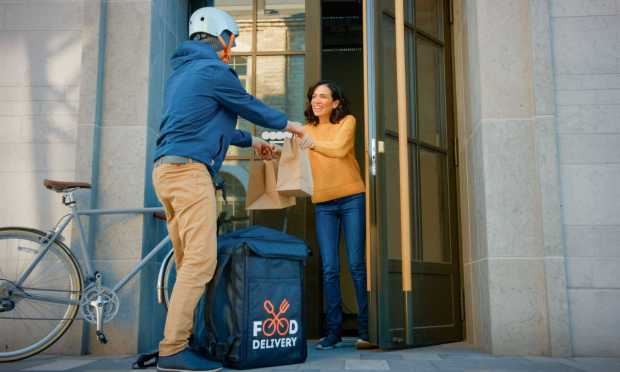Aggregators and Restaurants Wrestle Over Delivery Economics as Consumers Bail

As restaurants and aggregators jockey over delivery revenue, consumers are increasingly finding that the fees and upcharges on these platforms are not worth the price.
Aggregators have been looking to disincentivize restaurants from inflating menu prices on third-party platforms to compensate for the commission these marketplaces charge by informing consumers of these upcharges or by burying these eateries in search results, The Wall Street Journal reported Monday (Sept. 4).
When consumers see higher menu prices, it can make them reluctant to order delivery. Yet restaurants that do not inflate their prices must bear aggregators’ costly commissions, eating into their already narrow margins.
Many consumers steer clear of aggregators, struggling to justify the added cost of the channel. According to PYMNTS Intelligence gleaned from a survey of thousands of consumers for the “Connected Dining” series, 5% of restaurant customers placed their last order via aggregator. Additionally, the study found that, among consumers who do not use aggregators, 50% stated that aggregators are too expensive, and 1 in 5 non-users cited this as the most important reason they do not use the ordering channel.
Moreover, Intelligence from the study “Connected Dining: Rising Costs Push Consumers Toward Pickup” revealed that 58% of takeout customers said they pick up their meals to save on the delivery fee. Plus, 48% of consumers reported that they have been more likely to pick up their restaurant orders themselves rather than have them delivered due to inflation.
These issues are exacerbated by the current inflationary environment. The U.S. Bureau of Labor Statistics (BLS) Consumer Price Index (CPI) showed that year-over-year restaurant inflation, as of July, was at 7.1%, and menu prices have increased every month this year.
Many restaurant chains highlighted consumers’ hesitancy to pay the high cost of delivery on their recent earnings calls. Brett Schulman, president and CEO of fast-casual chain Cava, noted last month that the brand is “beginning to see a slight shift in delivery to pickup,” and Mitch Reback, chief financial officer of Sweetgreen, stated in July that there has been “channel movement into the frontline and pickup from native delivery.”
Similarly, Dine Brands CEO John Peyton told analysts last month that consumers have been shifting to pickup in “a deliberate decision to avoid extra cost associated with delivery and fees,” and Domino’s CEO Russell Weiner observed that key factors driving pickup adoption include consumers’ desires to “avoid the tip” and “avoid the delivery fee.”
Delivery orders tend to be more expensive than other channels, in part because of the fees and upcharges, and perhaps in part because consumers think they need to order more to make the added costs worth it.
Additional Connected Dining Intelligence revealed that, as of the start of this year, consumers were spending $36.20 on average per delivery order, up from the $21.50 per delivery order they were spending in the spring of last year. Delivery costs are nearly twice the $18.20 that restaurant customers spend on their average pickup order.

